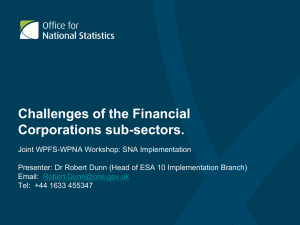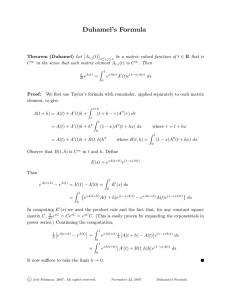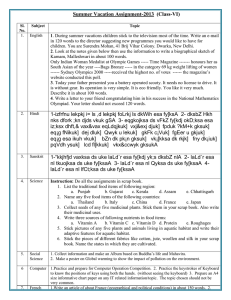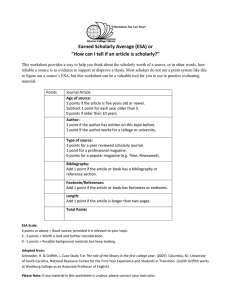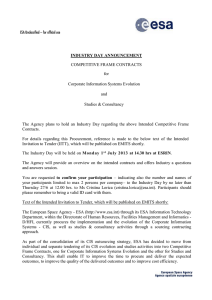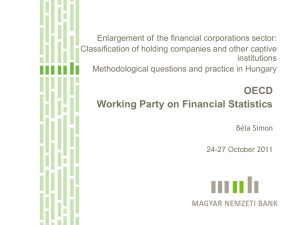Methodological changes: ESA 2010 and BPM6
advertisement
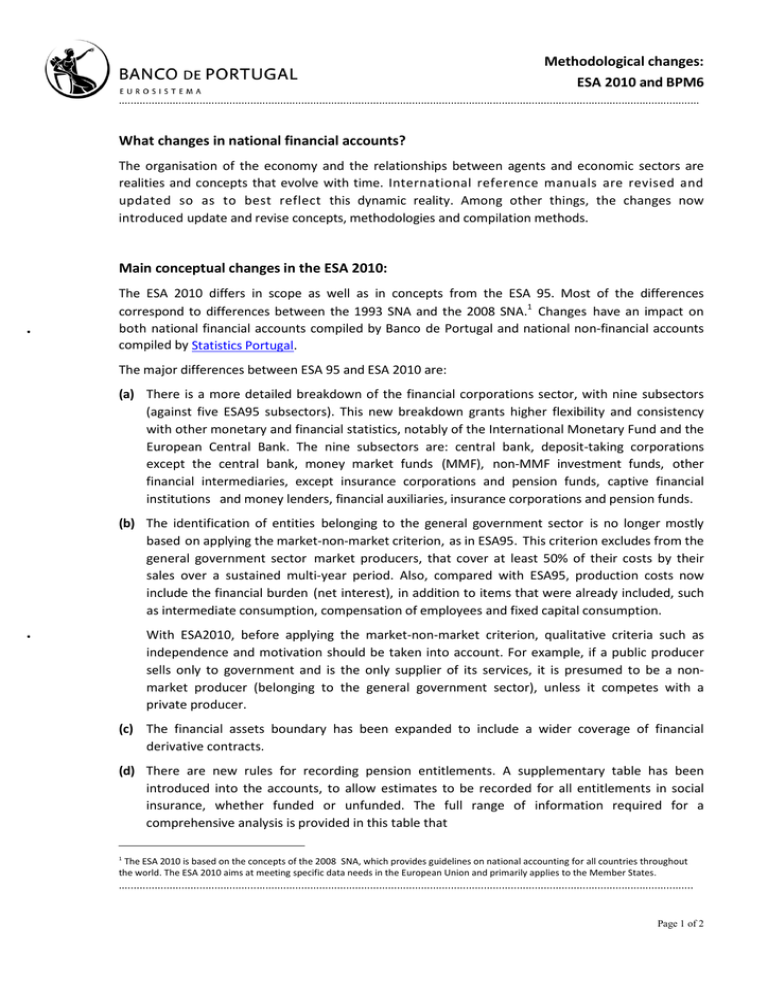
Methodological changes: ESA 2010 and BPM6 .................................................................................................................................................................................................. What changes in national financial accounts? The organisation of the economy and the relationships between agents and economic sectors are realities and concepts that evolve with time. International reference manuals are revised and updated so as to best reflect this dynamic reality. Among other things, the changes now introduced update and revise concepts, methodologies and compilation methods. Main conceptual changes in the ESA 2010: The ESA 2010 differs in scope as well as in concepts from the ESA 95. Most of the differences correspond to differences between the 1993 SNA and the 2008 SNA.1 Changes have an impact on both national financial accounts compiled by Banco de Portugal and national non-financial accounts compiled by Statistics Portugal. The major differences between ESA 95 and ESA 2010 are: (a) There is a more detailed breakdown of the financial corporations sector, with nine subsectors (against five ESA95 subsectors). This new breakdown grants higher flexibility and consistency with other monetary and financial statistics, notably of the International Monetary Fund and the European Central Bank. The nine subsectors are: central bank, deposit-taking corporations except the central bank, money market funds (MMF), non-MMF investment funds, other financial intermediaries, except insurance corporations and pension funds, captive financial institutions and money lenders, financial auxiliaries, insurance corporations and pension funds. (b) The identification of entities belonging to the general government sector is no longer mostly based on applying the market-non-market criterion, as in ESA95. This criterion excludes from the general government sector market producers, that cover at least 50% of their costs by their sales over a sustained multi-year period. Also, compared with ESA95, production costs now include the financial burden (net interest), in addition to items that were already included, such as intermediate consumption, compensation of employees and fixed capital consumption. With ESA2010, before applying the market-non-market criterion, qualitative criteria such as independence and motivation should be taken into account. For example, if a public producer sells only to government and is the only supplier of its services, it is presumed to be a nonmarket producer (belonging to the general government sector), unless it competes with a private producer. (c) The financial assets boundary has been expanded to include a wider coverage of financial derivative contracts. (d) There are new rules for recording pension entitlements. A supplementary table has been introduced into the accounts, to allow estimates to be recorded for all entitlements in social insurance, whether funded or unfunded. The full range of information required for a comprehensive analysis is provided in this table that 1 The ESA 2010 is based on the concepts of the 2008 SNA, which provides guidelines on national accounting for all countries throughout the world. The ESA 2010 aims at meeting specific data needs in the European Union and primarily applies to the Member States. ................................................................................................................................................................................................ Page 1 of 2 shows the entitlements and associated flows for all private and public pension schemes, whether funded or unfunded, and including social security pension schemes. (e) More guidance is given on financial corporations in general, and special purpose entities (SPEs) in particular. The treatment of government controlled SPEs abroad has been changed to ensure that liabilities incurred by the SPEs are shown in the government accounts. (f) The treatment of super dividends paid by public corporations has been clarified, i.e. they are to be treated as exceptional payments and withdrawals from equity. (g) Transactions between government and public corporations, and with securitisation vehicles, have been clarified to improve the recording of items that could significantly affect government debt. (h) The treatment of loan guarantees has been clarified, and a new treatment introduced for standardised loan guarantees, such as export credit guarantees and student loans guarantees. The new treatment is that, to the extent of the likely call on the guarantees, a financial asset and liability are to be recognised in the accounts. (i) The principles for the treatment of public-private partnerships have been set out, and the treatment of restructuring agencies expanded. (j) The recognition of research and development as capital formation leading to assets of intellectual property. This change shall be recorded in a satellite account, and included in the core accounts when sufficient robustness and harmonisation of measures is observable amongst Member States. (k) Expenditures on weapon systems that meet the general definition of assets have been classified as fixed capital formation, rather than intermediate expenditure. (l) The analytical concept of capital services has been introduced for market production, so that a supplementary table may be produced showing them as a component of value added. (m) The application of the rules on change of ownership of goods has been made universal, resulting in changes to the recording of merchanting, and goods sent for processing, both abroad and in the domestic economy. This results in goods sent for processing abroad being recorded on a net basis, as opposed to a gross basis in the 1993 SNA and the ESA 95. This change has significant implications for the recording of such activities in the supply and use framework. The changes in the ESA 2010 in comparison with the ESA 95 are not restricted to conceptual changes. There are major differences in scope, with new chapters on satellite accounts, government accounts and the rest of the world accounts. There are also significant extensions to the chapters on quarterly accounts and regional accounts. Page 2 of 2
